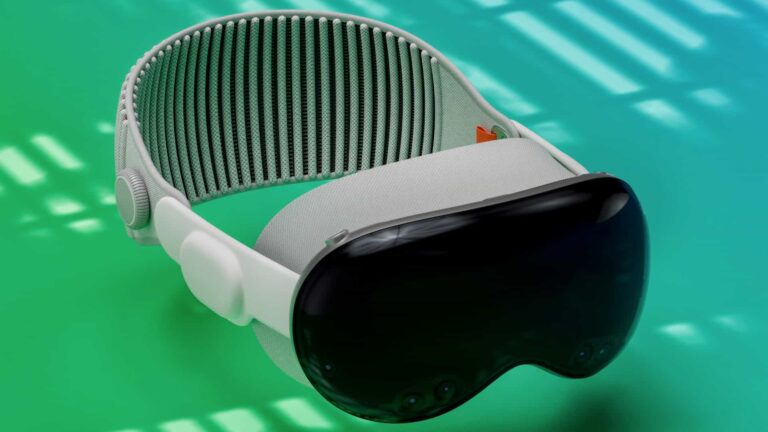
Apple recently announced its plans to enable WebXR for its visionOS 2 update, which will finally make seamless cross-platform mixed reality (XR) experiences possible. What should users expect from this change? Will it have any impact beyond improving content variety?
WebXR Support Is Coming to the Apple Vision Pro
VisionOS 2 — the second-generation operating system (OS) for the Apple Vision Pro — will soon support cross-platform XR. While the company announced its visionOS update at the 2024 Worldwide Developers Conference, it did not reveal its plans for WebXR during its keynote. Instead, an Apple engineer discussed the topic in a developer session published on June 12.
WebXR is an application programming interface for web content running on XR hardware. It allows developers to deliver content directly from the web instead of through dedicated apps, enabling native interactivity regardless of the device used.
While WebXR has technically been available since the Vision Pro’s launch, users have had to go to great lengths to find and manually enable it in Safari’s settings. Even then, the web-based XR content they found lacked quality and performed poorly since the feature was experimental. VisionOS 2 will enable it by default and offer support.
Why Enabling Cross-Platform XR With WebXR Matters
For months, Vision Pro users have relied on native apps to access XR material, meaning they have been confined to the Apple App Store — a highly curated platform where every submission is manually reviewed. Apps cannot be overtly sexual, violent or contentious, eliminating a large amount of existing content.
Besides, requiring users to utilize a dedicated platform creates accessibility issues. A developer who makes an app available in one store may not publish it in another due to technical, management or legal barriers. Since WebXR is web-based, they only need to publish and manage one application.
Notably, the visionOS 2 WebXR support could have far-reaching implications for XR tech as a whole. Enabling cross-platform XR means people do not need multiple devices to access different platforms. This mitigates technology overload and planned obsolescence — a significant achievement, considering electronic waste is among the fastest-growing garbage streams.
The amount of e-waste produced worldwide is projected to grow to 74 million metric tons by 2030, up from 61 million metric tons in 2023. Apple’s decision to add a WebXR feature in visionOS 2 could curb this growth. At the very least, it could increase awareness of the issue — an overlooked benefit of the cross-platform model.
What the VisionOS 2 WebXR Support Means for Users
If you own an Apple Vision Pro, the ability to launch a VR experience from Safari will likely be one of the first things you notice after updating your system to visionOS 2. After launching Safari from Home View, you can access websites that offer XR material. WebXR is similar to website hosting — anyone can publish content — so there will be no content restrictions.
WebXR for visionOS 2 only supports fully immersive experiences. While the augmented reality (AR) flag exists, it is nonfunctional — semi-immersive sessions are not yet in a testable state. This suggests they are under development and will likely enter an experimental phase in the coming months, meaning you could soon access them as a beta tester.
When Can You Expect to Experience WebXR Content?
Apple has set the visionOS 2 release date for sometime in fall 2024, so expect to access this feature within a few months. While it is already in the developer preview stage, it will not be available to the general public for some time. Of course, the original visionOS’s WebXR flag will remain available as an experimental feature until then.
How Apple’s WebXR Decision Affects the Future of XR
While headsets like Meta’s Quest, Huawei’s VR Glasses and HTC’s Vive, among others, already offer WebXR support, Apple is a powerhouse in the tech sector — its actions cause long-lasting ripple effects. Although its four-figure XR headset didn’t perform as well at launch as stakeholders anticipated, the decision to expand content availability could drive interest.
Apple’s decision to enable seamless cross-platform experiences could pave the way for more web-based AR and VR material aimed at consumers. Considering that around 55% of shoppers already use content to inform their purchasing decisions, improving accessibility may prompt marketers, business leaders and developers to act.
Apple has already worked with the Immersive Web Working Group to improve functionality. In March, the company added support for gaze-and-pinch gestures, despite not offering WebXR as an official feature yet. This move suggests it may have plans for future advancements. Since multiple companies use this web-based XR content, the implications are significant.
Ultimately, the visionOS 2 update will make accessing XR material as easy as clicking a link. This rise in accessibility may make the Vision Pro more appealing and will likely trigger an influx of web-based content — driving headset sales. With enough success, Apple may feel secure branching out further into VR and AR territory, convincing other tech giants to join.
Only a Few Months Until the VisionOS 2’s WebXR Is Here
The Vision Pro may not have sold as well as tech journalists expected, but its mainstream debut still represented significant progress in the XR field. Now that WebXR will open up web-based content for users, Apple may turn around its sales figures. For now, all users can do is anticipate the update or develop their own interactive experience.
 Eleanor Hecks is Editor-in-Chief of Designerly Magazine where she specializes in design, development, and UX topics. Follow Designerly on X @Designerlymag.
Eleanor Hecks is Editor-in-Chief of Designerly Magazine where she specializes in design, development, and UX topics. Follow Designerly on X @Designerlymag.

